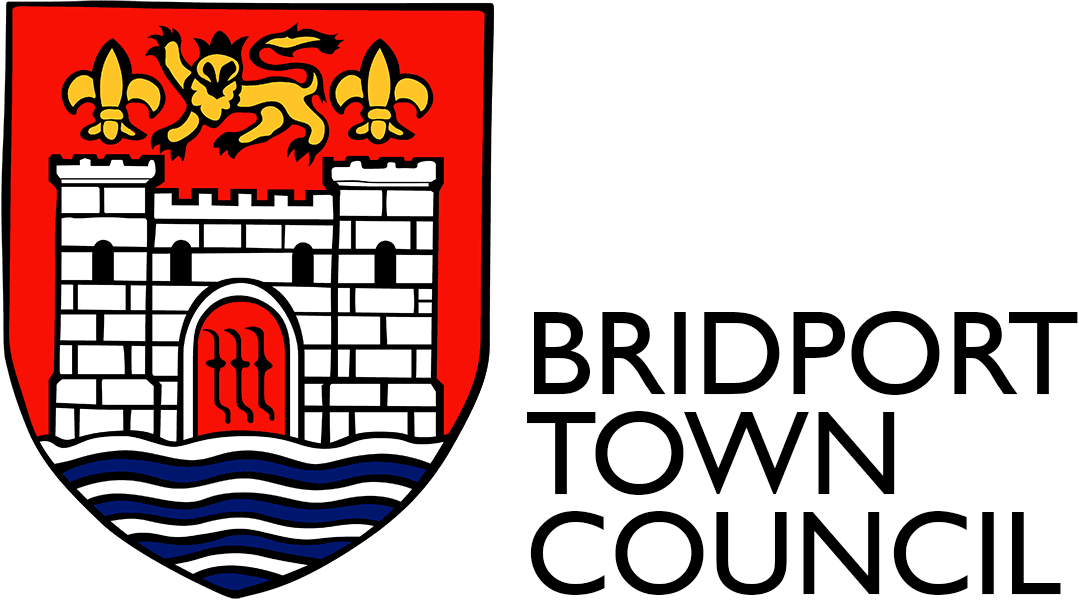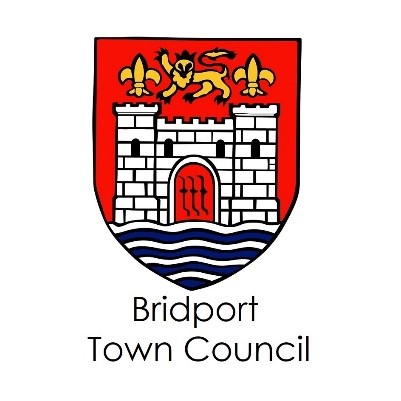
Bridport Tree Planting – investing in the future.
Like most people I am a big fan of trees. As a small boy climbing them was the main attraction. As I grew older I gradually came to realise what amazing, complex and beautiful things they are, and eventually to understand the vital role they play in the ecosystem that sustains our planet.
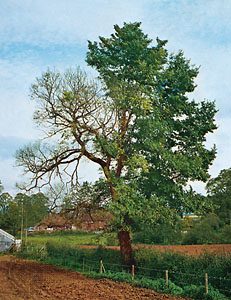
I grew up on a farm called Elms Farm which was home to some amazing specimens of our native English elm tree. This was a time when the English elm was a dominant feature of the British landscape, but it was ravaged by Dutch elm disease the 1960/70s. As a result of the disease there has been a huge change in our landscape, today the once mighty English elm is only found occasionally as small specimens in hedgerows or woodland. The effect of Dutch elm disease can be seen in the image on the right.
Today the threat is to our ash trees which are suffering from die back. The Allington Hillbillies have reported that in 2019, they saw the first signs of ash die back which now has a hold on all the ash trees. They have been proactive and have already felled 130 ash and replanted with a wider diversity of trees. Sadly they will be felling even more and this is a pattern that is being repeated across the country
Woodland first colonised Britain around 10,000 years ago, following the last glaciation, reaching a natural equilibrium between 7,000 and 5,000 years ago. During this peak period the ‘wildwood’ is thought to have covered around 75% of the landscape. Significant loss of woodland started over four thousand years ago in prehistory, in 1086 the Domesday Book indicated tree cover of had reduced to around 15%, but by the beginning of the 20th century this had dropped to a mere 5%. Today it is still less than 12%.
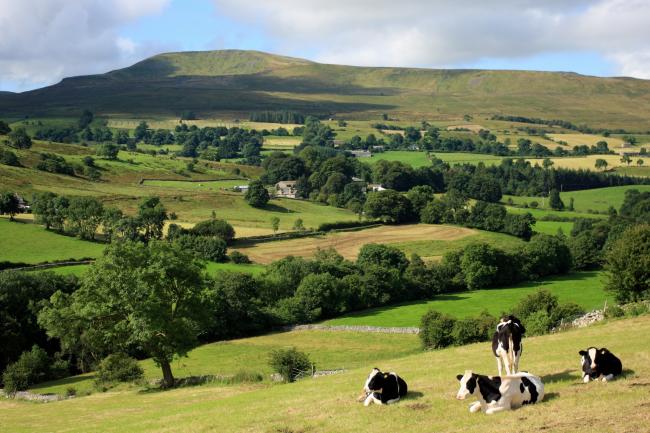
It might come as a surprise to find that the parts of the UK with the densest tree cover are more likely to be urban areas. For example, a research project found two London boroughs – Camden and Croydon – were among the top 20 places in England and Wales with the most tree cover. Meanwhile, largely rural areas had some of the least – including the Lake District and the Yorkshire Dales – image right. Garden trees are boosting numbers in towns, while farming helps explain some of the low rural rankings.
Since its foundation in 1968 the borough of Milton Keynes has planted an estimated 22 million trees. Trees were from the outset a central part of the planning of the new town which today has a population of just under 300,000. For every square foot of industrial land a tree has been planted and for many years every new home was provided with a tree voucher enabling the householder to select a tree for their garden. Every road and street is tree lined. The result today, some 50 years on, it is often described as the city in the forest – a far cry from the concrete jungle used by opponents at the time of its inception. Trees have a civilising effect.
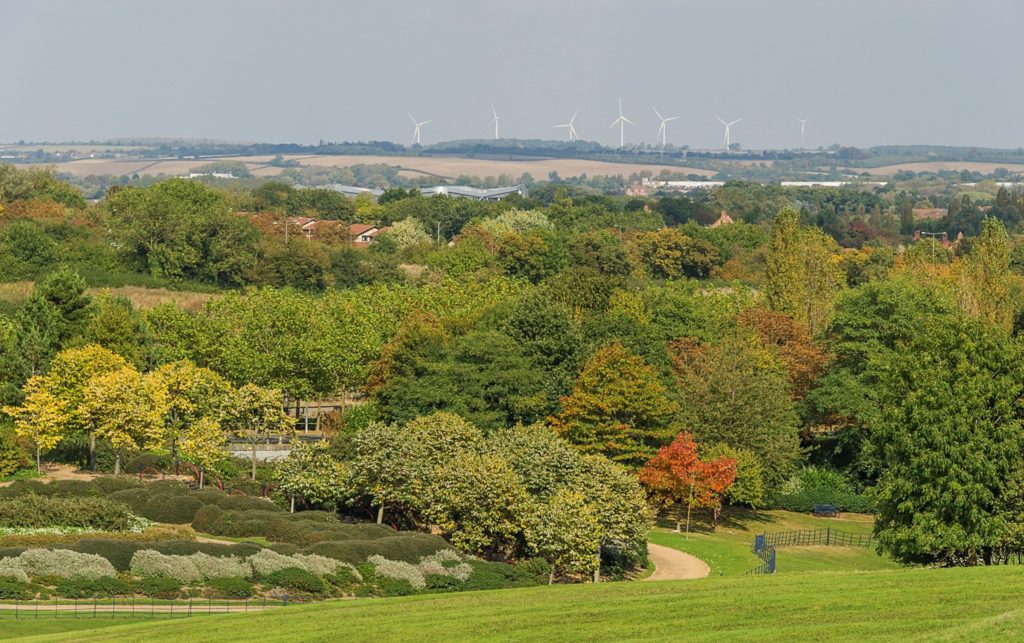
The government believes 12% can be reached again by 2060. In order to achieve this target new ideas in managing fragmented woodland for conservation and biodiversity are emerging. For more information:
https://www.forestresearch.gov.uk/documents/1437/QJF_legacy_of_fragmentation_may06.pdf
Whilst the motivation to plant trees often comes from our love and respect for them, increased tree cover is essential if we are going to come close to keeping our promises to maintain a habitable climate. We need more trees to:
- help counteract the increase in greenhouse gas emissions,
- increase biodiversity and wildlife,
- provide shade and cooling,
- contribute towards protecting against flooding.
The Bridport Tree Planting group was established in the autumn of 2019 to support the Friends of the Earth campaign to double tree cover in the UK.
The Bridport Tree Group has worked closely with Bridport Town Council to map, develop and maintain the local tree stock. In order to find suitable sites for planting, they aim to foster relationships with parish councils, schools, housing associations, farmers and interested members of the public. They can help with decisions on the most appropriate native species for each location and help put in place a careful maintenance programme; both necessary to aid successful establishment. Natural regeneration is also greatly valued and they facilitate this wherever possible.
Planting a tree is the beginning of process that will, if everything works out, outlive not only the person planting it but several future generations. It is not something that should be done without careful thought and a long term vision. Apart from selecting ‘the right tree for the right place’, in the first few years it will need to be watered if there is a prolonged dry spell, staking and the bands checked and adjusted regularly. At some future point the initial planting will need to be thinned to provide sufficient space for the trees to develop into tall and majestic mature specimens in anything up to 50 plus years time depending on the species. The Bridport Tree Planting group have the knowledge, and strategic plans in place in order to ensure the trees planted now will be well looked after.
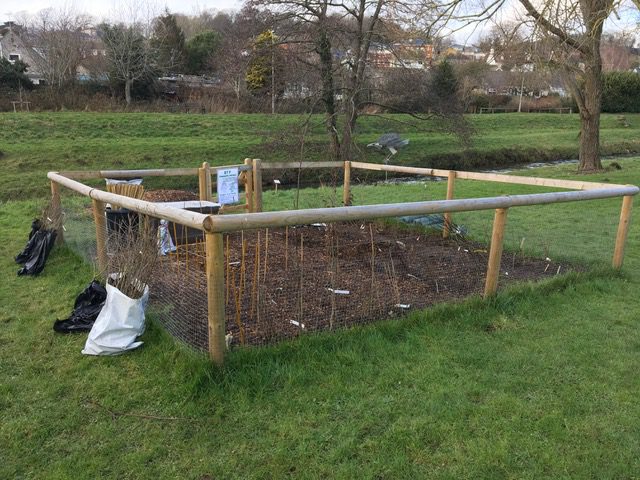
Bridport Tree Planting manage a modest tree nursery at Riverside Gardens on land borrowed from the Town Council. This is where they can hold saplings prior to planting and grow on trees bought in or donated to them. The tree stock is sourced from several conservation organisations, tree nurseries and they also accept young trees from the public if they are suitable.
The group has been very busy during this planting season:
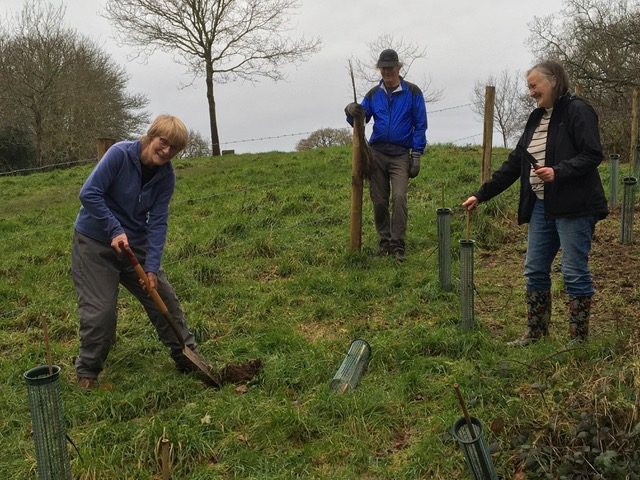
Sue Arnold of Millennium Green planting one of 90+ new saplings, helped by John Hinsley and Lucy Rowland of Bridport Tree Planting. They also put up the new fence to protect from grazing cattle.
Five days after the Millennium Green planting, a small team of volunteers planted 75 saplings – hazel, hawthorn, blackthorn, rowan, downy birch, crabapple, goat willow, a couple of beeches and alders at Dibdin View in the Flaxhayes area of town on land owned by Magna Housing.
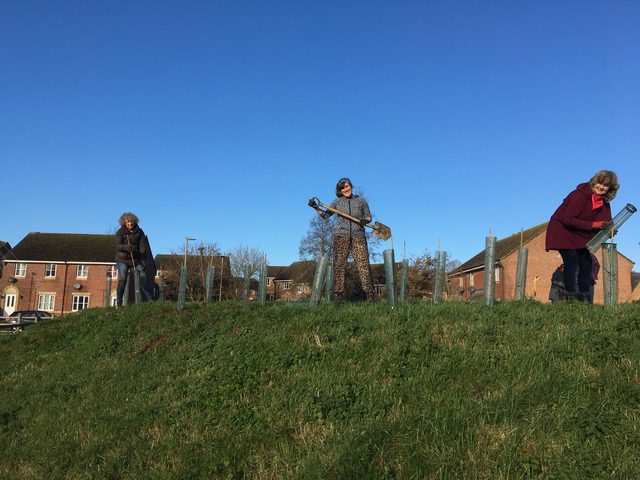
Here at Dibden View, next to some trees which were vandalised, five specimen trees, oaks and hornbeams, were also planted. The main aim is to provide biodiversity and a screen from the industrial estate.
At Asker Meadows: more trees will be going in soon.
At the West Bay end of the cycle path/walkway near the playground – the group have provided and have planted 54 saplings here.
At Bridport Community Centre and Youth Club – a new 30-metre mixed native hedge has been planted.
At St. Catherine’s School the group will be providing 28 saplings plus some bigger trees soon.
At Bridport Community Orchard 30 saplings have been provided and will be planted to replace non native species growing in the southern boundary hedge. These will be laid in a few years time to make a much denser hedge.
Before the end of the this year’s planting season at the end of March, there will be a new hedge planted in Walditch at a play area; 30 new trees are planned for Slades Green; plus there will be a big planting in Burton Bradstock.
That makes a total of nearly 600 trees planted in public spaces this planting season. This is an outstanding achievement and I am sure that like me the people of Bridport are extremely grateful to the group for the work they are doing to make our town not only a greener place to live but one that is contributing towards the mitigation of the impact of climate change and urban pollution.
That said I am aware that there are people who do not share this enthusiasm for trees. I have met people who think it is a waste of time and money. When talking to members of Bridport Tree Planting recently, I was told by some of the volunteers about meeting folk who don’t like trees!
Comments made have included:
“I’ve been living here for forty years and we like it just the way it is and we don’t want any trees.” “It’s a green and that is how we like it.” “We don’t want wildflowers, we don’t want trees, we just want a nicely cut grass area” etc etc. This was in an area of town where some people don’t want any benches either – “would attract the wrong sort of people who would sit there drinking all day” – and they don’t want any play equipment because “it would attract noisy children”. Arguments against trees also included. “Spoil the view; roots and leaves block drains; all those twigs on the ground and children throw them at each other …”.
There was no mention at all of the benefits that trees bring, carbon capture, climate change, better biodiversity – so I am thinking we still have an awful lot of education to do to convince people about the positive impacts that trees have.
To find out more about Bridport Tree Planting visit their Facebook page:
https://www.facebook.com/bridporttreeplanting/
And finally, something to thinks about. If a significantly sized area of land was to become available in the AONB should it be left as it is or planted with trees, or solar panels, or wind turbines in order to contribute towards mitigation of the impact of climate change?
